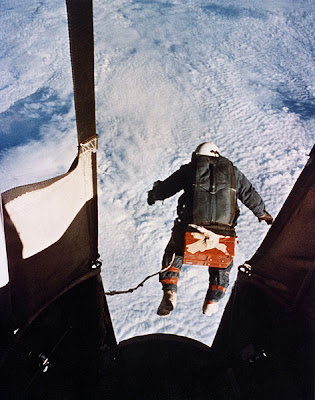This has got to be one of the most beautiful
photos I've ever seen. Not just because of the stunning beauty of the
lunar surface and the crescent Earth, but because it shows this beauty
even in the time period in which it was taken. The 196
0s
was a time of conflict across the entire world. The Cold War was going
strong, along with dozens of civil wars, small brush fire conflicts, as
well as a major war here and there. Yet this photograph doesn't show
that. It shows the Earth from the outside in. It shows a blue, white and
green planet. A planet full of life. A planet so different from the
others near it.
Space exploration may be expensive, it may
seem to not have much of a purpose right now, but it has shaped Earth's
future in ways unimaginable to us right now.

















































